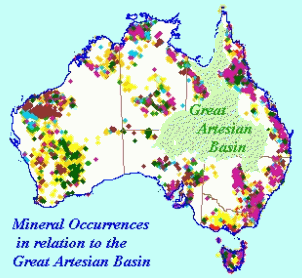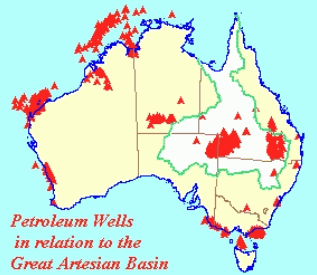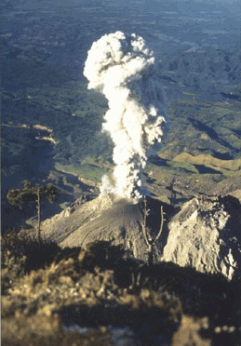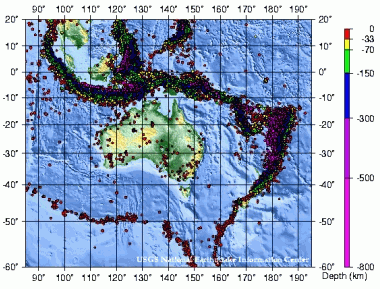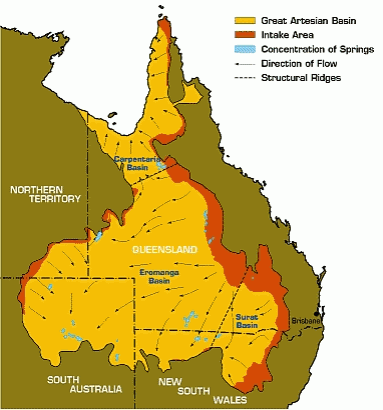Historical introduction to the Great Artesian Basin
Drilling of water bores into the Great Artesian Basin began in 1882. The first deep bores to or near bedrock discharged great fountains of water into the air. The flowing wells were allowed to run continuously, and after a time the flows of water began to decline. Even before the end of the 1880's there was concern about the waste of water.
Legislation to prevent the continued enormous waste of water was passed by the Lower House of Parliament in Queensland in 1891. But the Upper House rejected the Bill, believing that the outflow from the wells was insignificant compared with the abundant continued recharge of the wells from rainfall. The proposed legislation was dropped as unnecessary. That fallacious belief has continued for the past 110 years.
In the summer of 1901-2, Professor J. W. Gregory, Head of Geology at the University of Melbourne, took a party of students to Central Australia, and inspected the flowing wells near Lake Eyre. Gregory noted the chemical composition of the waters, the bore water temperatures and heat flow, the relationship of the Basin with the volcanism in eastern Australia and noted the existence of metal mines adjacent to the Basin at Broken Hill, Cobar and Mt. Isa. He concluded that the artesian waters originated in the crust of the Earth below the Great Artesian Basin. Gregory criticised the prevailing belief in the recharge of the aquifers by lateral seepage over distances of hundreds of miles. He demonstrated that the large head losses involved prohibited the possibility of any recharge from surface rainfall.
Gregory's book "The Dead Heart of Australia" was published in London in 1906. In that book he provided detailed reasons why the Basin was not being recharged from surface rainfall. He prepared a sketch map showing the underground temperature gradients throughout the Basin, and identified the hot spots. He studied the chemical composition of well waters in the Basin, and prepared a sketch map showing the areas where there was a concentration of solid constituents. (Ref. 1).
In 1907 there was a stern refutation of Gregory by E. F. Pittman, Government Geologist of New South Wales, in a paper to the Royal Society of New South Wales entitled "Problems of the Artesian Water Supply of Australia, with special Reference to Professor Gregory's Theory". (Ref. 2)
When we read that 1907 paper by Pittman it is evident that the firm views of Gregory were a great embarrassment. But the level of understanding of the matter by Gregory was not shared by anyone in Australia, or overseas. That did not seem to worry Gregory. The fascination of science and exploration and discovery were his life.
But it was a worry to Pittman, the Government Geologist of New South Wales. At one point in his paper, Pittman pleads,
"Suffice it to say that the view adopted by most American geologists, viz. That 'all underground waters have their origin in rainfall' has much to recommend it."'
Pittman concluded,
"It may be confidently re-affirmed that the great Australian water-bearing basin is a true artesian area, that the water of the flowing wells had a meteoric and not a plutonic origin."
Reading that paper almost a century later, one has the impression that Pittman was not really confident and simply hoped that the matter was settled.
Gregory waited five years before replying. He was then Professor of Geology at the University of Glasgow. In 1911 he published a very comprehensive paper in the Geographical Journal of the Royal Geographical Society. It is a very detailed analysis of the scientific data on the Great Artesian Basin at that time. (Ref. 3)
In 1914, Pittman responded with a similarly comprehensive rebuttal of the 1911 paper by Gregory. (Ref.4)
Pittman, in the conclusion of his 1914 paper, noted that he "regrets the extremely controversial character of this paper", but it was necessary because the Gregory paper of 1911 "contains a number of emphatic statements which ...are based upon insufficient or unreliable data."
The 1914 paper by Pittman was the end of the debate. For the rest of the century, minds were shut.



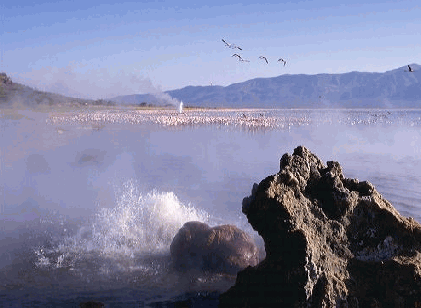


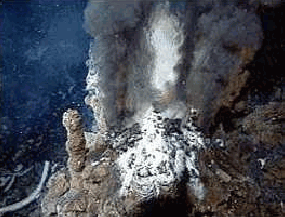
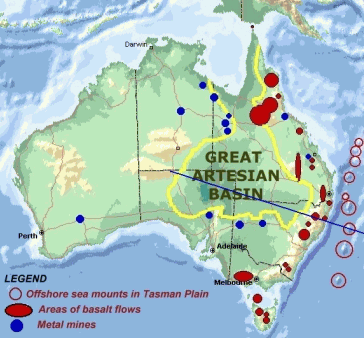
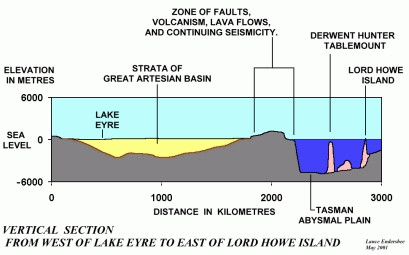
 Figure 7. Profile of the Great Artesian Basin from Roxby Downs to Blackall. These sediments were deposited below sea level, nominally in horizontal layers. There is indication of some sagging of the base during continued deposition. This whole area of Australia must have been uplifted above sea level, the sediments became consolidated, there was further sagging, and some lowering of this whole area of Australia relative to sea level.
Figure 7. Profile of the Great Artesian Basin from Roxby Downs to Blackall. These sediments were deposited below sea level, nominally in horizontal layers. There is indication of some sagging of the base during continued deposition. This whole area of Australia must have been uplifted above sea level, the sediments became consolidated, there was further sagging, and some lowering of this whole area of Australia relative to sea level.